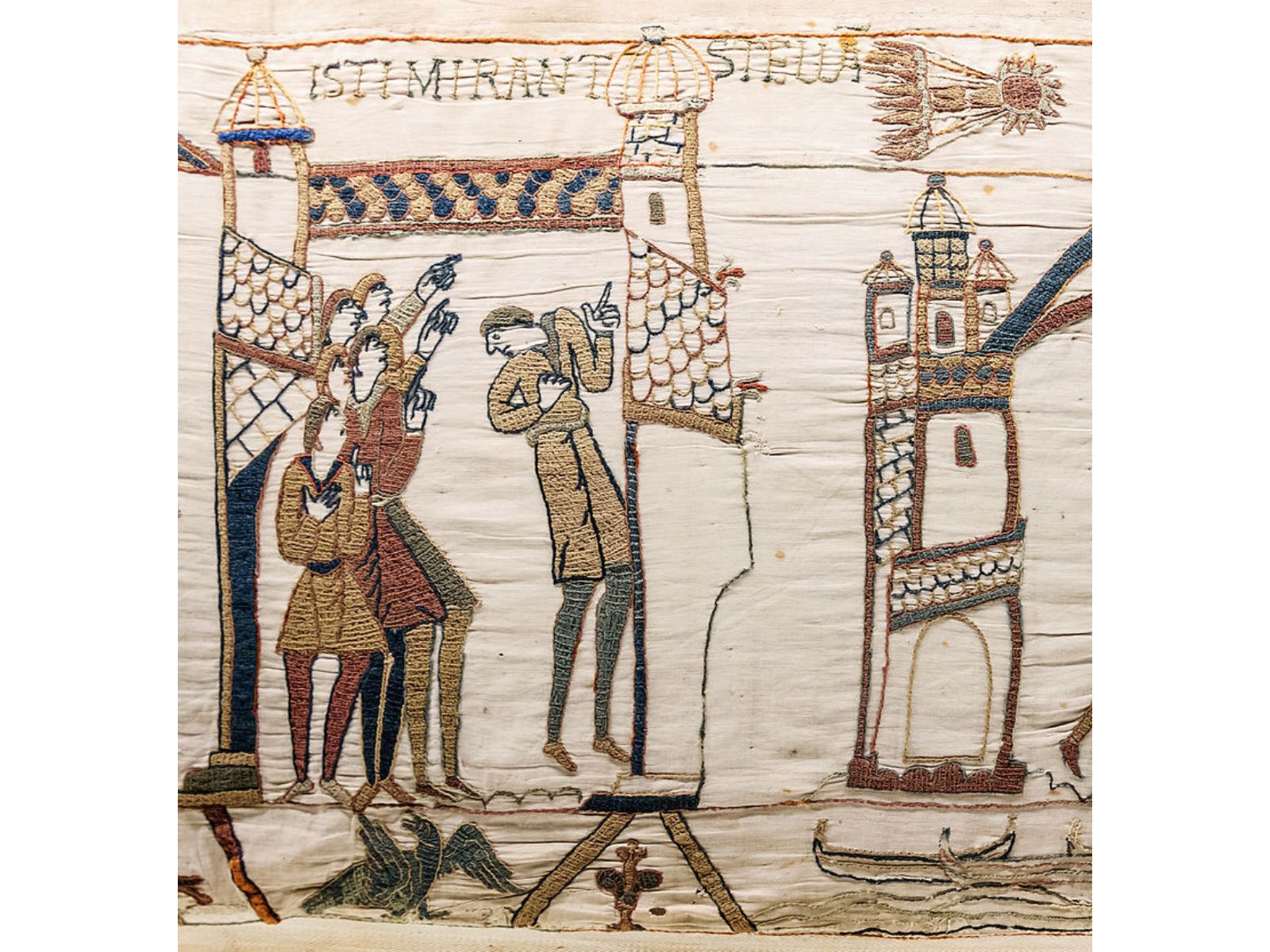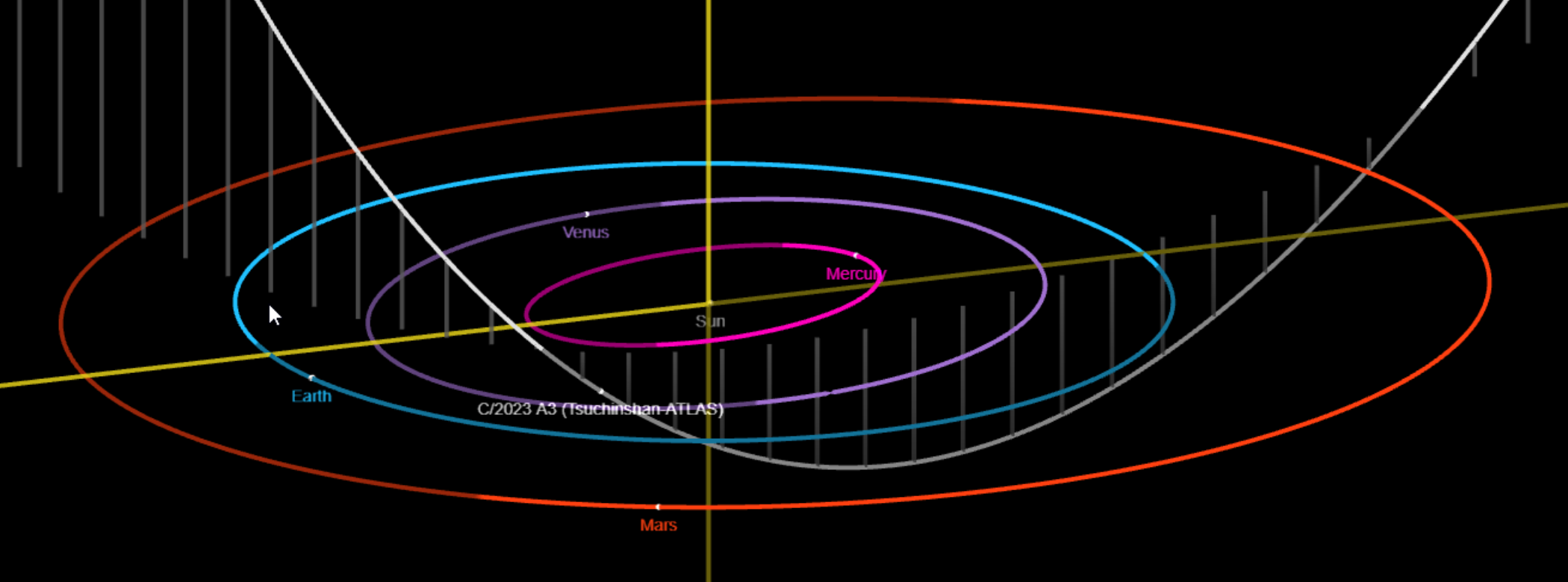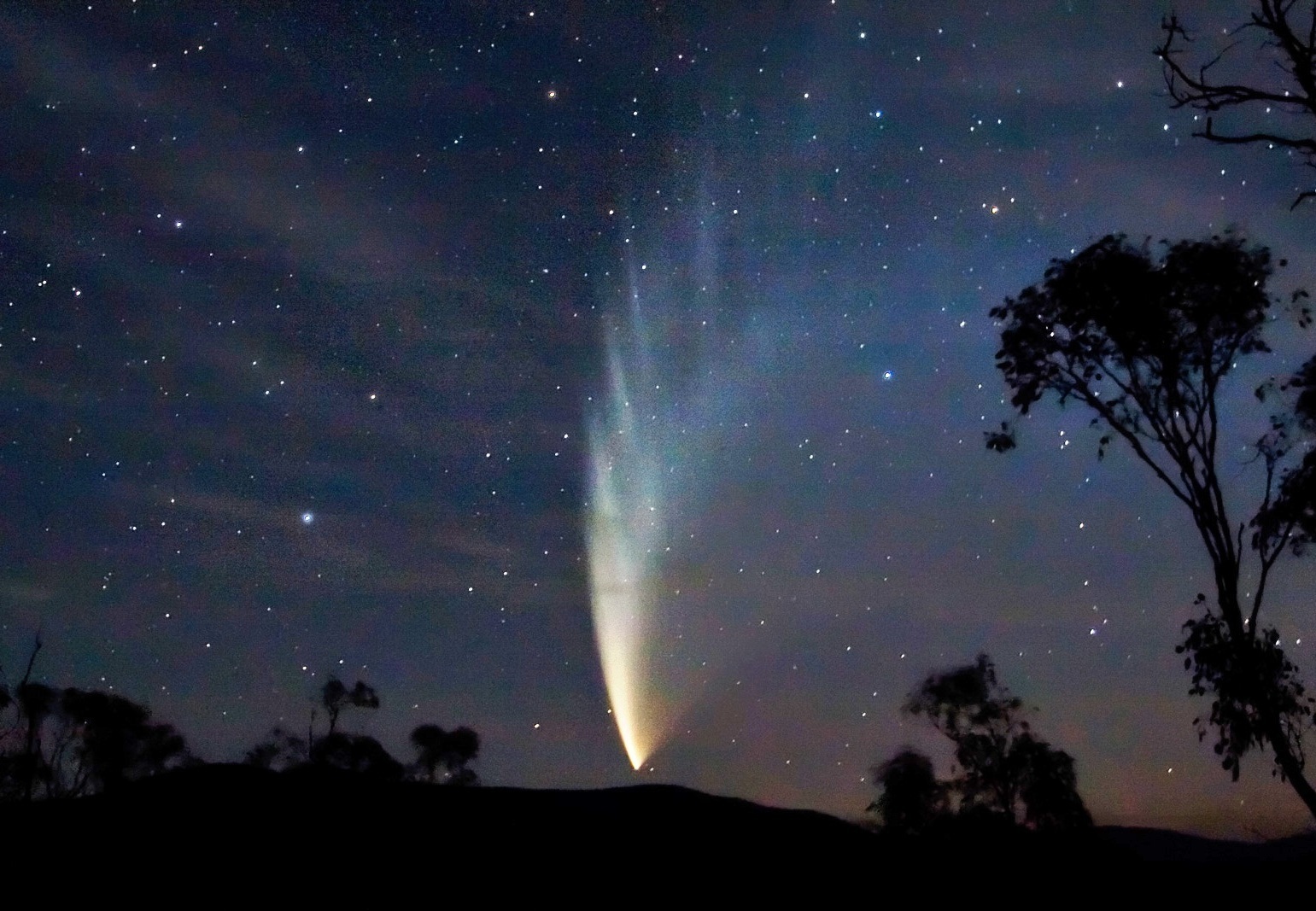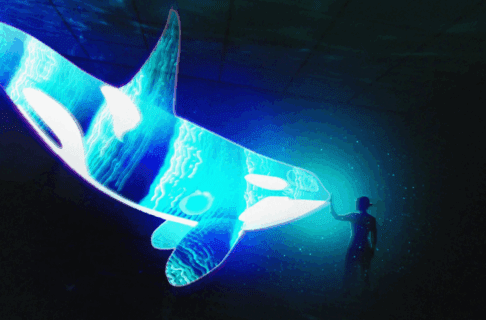Posted on: Friday October 11, 2024
By the time you read this, Earth will have not just one but two comets visiting our corner of the solar system. These objects remind us that our planet is part of a solar system that is dynamic and still has new objects awaiting discovery. With luck, both of these objects will be visible to the average person with the unaided eye.

Comets are small, icy bodies in our solar system which are left over from the formation of the solar system, kept “fresh” in the deep freeze of deep space. Occasionally, collisions or the gravity of an outer planet will push one in towards the Sun on a long, looping oval path. Closer to the Sun, the ice melts and releases a long tail of dust that can be seen from Earth. At any given time, there are a half-dozen or more comets in the sky, but most are invisible without a powerful telescope.
Image: Bright comets have been seen throughout recorded history, and have often been seen as evil omens. Comet Halley was visible in 1066 and was immortalized in the Bayeux tapestry.
Comet 2023 A3 (Tsuchinshen-ATLAS) was discovered last year and has put on an amazing show in the southern hemisphere in late September and early October. When it becomes visible from Canada in mid-October it should be an interesting sight for Manitobans throughout the fall. Meanwhile, a second comet called 2024 S1 (ATLAS) was recently discovered that may pass very close to the Sun at the end of October, perhaps becoming very bright… or disintegrating in the Sun’s heat.

The Orbit of Comet Tsuchinshen-ATLAS dives down from above the solar system (on the left of the image), passes close to the Sun, and then heads back up between Earth and Sun. Manitobans will see it as it passes above the Sun this month. © NASA SSD

The Sky isn’t just starry wallpaper and Supermoons – there is a lot going on up there. You can find out how to see the planets and other celestial events by following the Manitoba Museum’s Astronomy blog at ManitobaMuseum.ca/Stories or taking in one of our exciting planetarium shows.
The stars belong to everyone, so join along as we explore the beauty and wonder of our universe.
Image: A sungrazing comet like Comet 2024 S1 (ATLAS) can put on an amazing show if it survives its passage around the Sun. This image shows sungrazing Comet McNaught, also known as “the Great Comet of 2007”.






